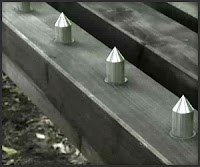Vesta Received Hydrated Material Package As Special Delivery
It seems like ages ago when scientists from different camps just kept arguing on where water originates from among the many terrestrial planets. Recently, NASA also gets into the argument now that its Dawn mission to Vesta has suggested moisture was made available through degenerations of small particles at a time when the Solar System was filled with dust.
This is yet another radically different argument about bringing hydrous materials to planets and moons. It is definitely very different hypothesis as compared to the vaporization temperature differential is the central part of water supply. When the European Planetary Science Congress commences in Madrid on 26 Sep, Maria Cristina De Sanctis from the Dawn team will present its argument and findings.
De Sanctis who is hailed from the Institute of Astrophysics and Space Planetology in Italy noticed that the Vesta is definitely blessed with hydrated components on certain regions. These are regions which you don't count on solar illumination or temperature differential to produce the moisture, as would be expected in the planet earth. The finding is unexpected and it suggests that another theory will have to be put together to explain the availability of water in such planet or asteroid.
De Sanctis's team believes that the Dawn's visible and infra red (VIR) mapping spectrometer would show the way. They studied the data and realized that high hydroxl bondage of hydrogen and oxygen atom) concentrations tend to focus on highly-cratered terrains and the Oppia crater.
Image [Click to enlarge]
Hydroxyl is believed to be the result of continuous interaction of protons from the solar wind with the lunar regolith. Interestingly the 2 poles on Vesta as well as craters which are perpetually shadowed represent the areas with the highest hydroxyl concentration. Of course these areas are cold, at all times. In contrast, the seasonal weather change which brought about short term coldness does not seem to influence the concentration level of hydroxyl on Vesta. Another observation is that the concentration reading seems to be fairly stable, which means that the content of hydroxyl is not going to be influenced by short term weather change or extremely cold temperatures over short time.
One interesting observation from mission Dawn is that high hydroxyl areas on Vesta seem to congregate on its oldest surfaces. Definitely not all craters are equal, as researches found out that those craters resulted from more recent impacts tend to show low concentration hydroxyl (if any); this suggest hydroxyl is not part of an ongoing process within the asteroid or moon.
Perhaps the more significant aspect about this research is that Vesta's hydroxyl happens to be replenished by small particles over a long stretch of time. This period could have corresponded to the primordial solar system, or the Late Heavy Bombardment era, when there were significant evidence of moisture or primitive material dust (which subsequently turn to hydrous products).
But the story on Vesta does not end here. Its Oppia Crater is known to be laden with hydroxyl, but there is a lack of primitive material there. Apparently there is something else at work which is responsible for hydroxyl deposit on that part of Vesta.
It is a still big puzzle as far as hydroxyl content is concerned. While we are able to pinpoint certain delivery mechanism of hydroxyl, these are definitely not exclusive in hydroxyl production. Everything we are about to learn about the delivery of hydrous materials on Vesta asteroid would lend some insights about how our solar system is formed.




Comments
Post a Comment